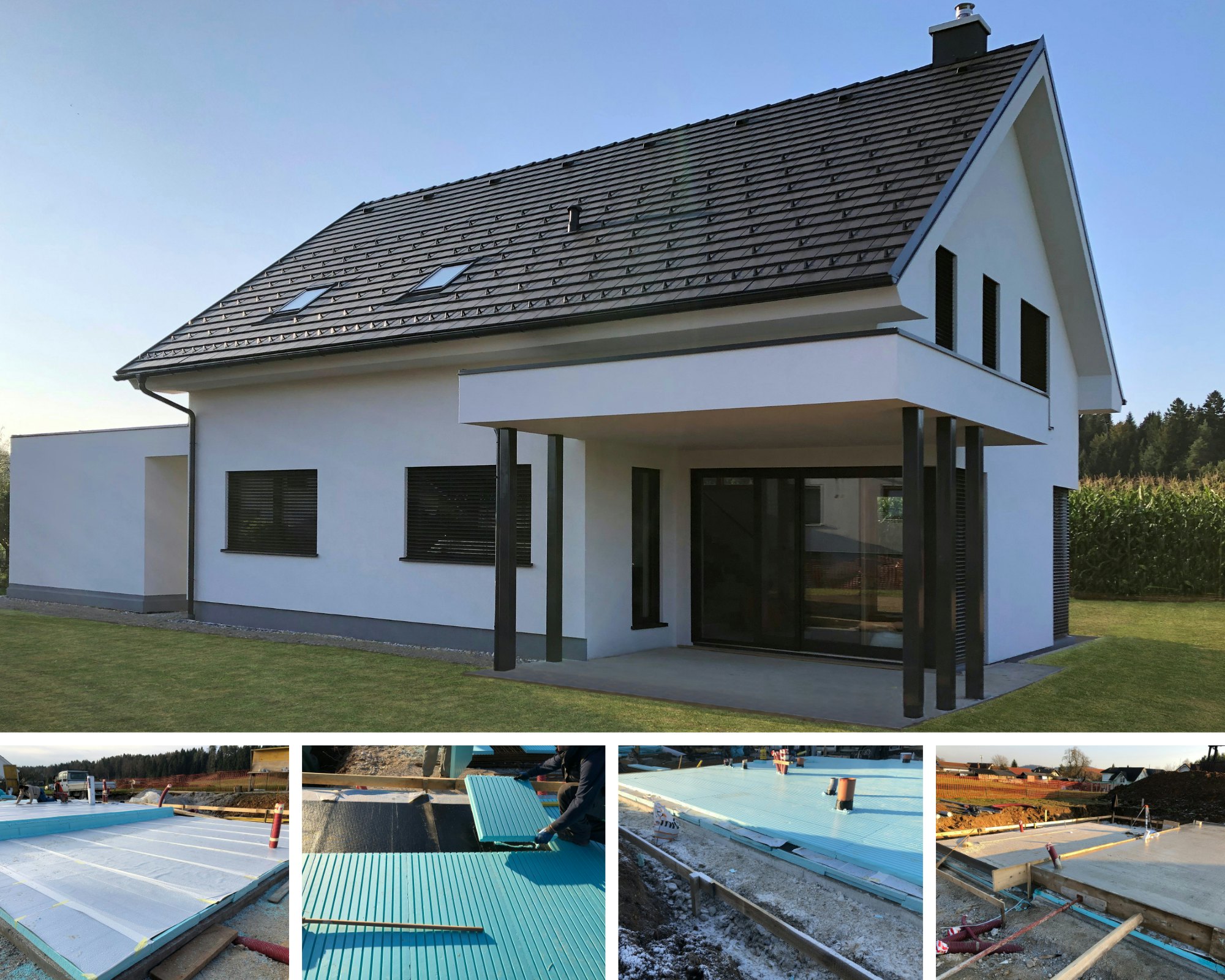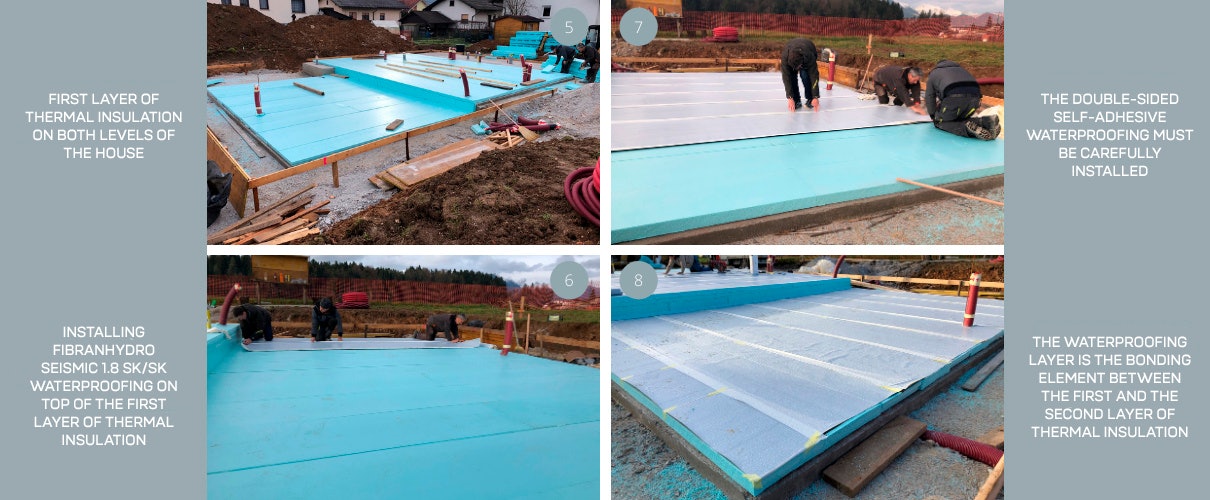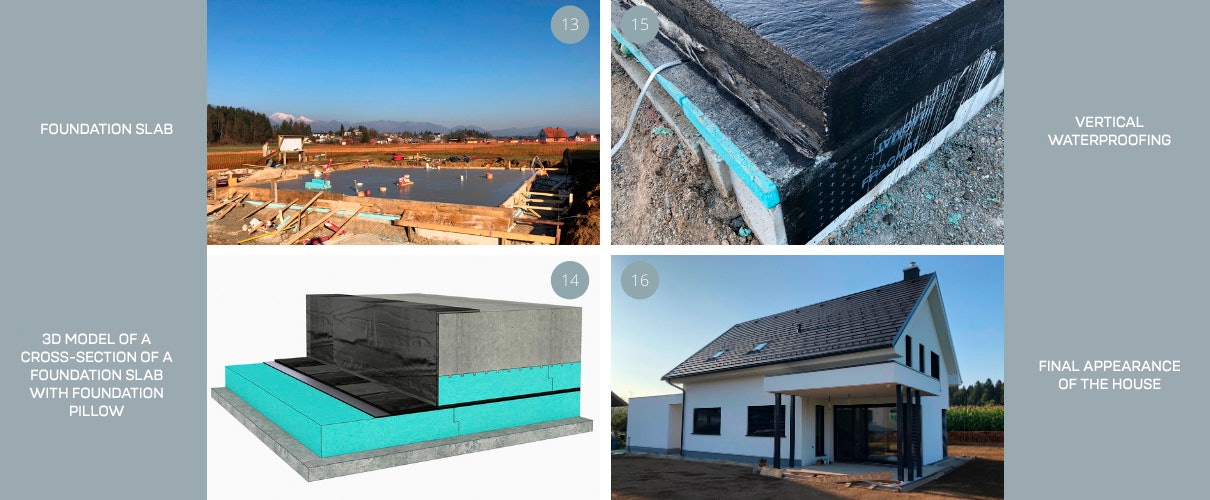
Customer experience - execution of the foundation slab using the SEISMIC solution
In our previous blog we explained, among other things, that until recently strip or point foundations were used in most cases, but nowadays, to make low-energy, passive or nearly zero-energy construction more efficient, they are being replaced by the construction of a so-called foundation slab or pillow. Having the foundation in the form of a foundation slab means that the load is distributed more evenly over the surface, allowing us to apply thermal insulation underneath the foundation slab as well. We wish to avoid thermal bridges, which is why a foundation slab on thermal insulation is a compulsory method of foundation for modern energy-efficient buildings. Particular attention must be paid to the choice of the appropriate thermal insulation to be installed underneath the building. Below we will tell you about the experience of a customer who opted for the FIBRAN SEISMIC foundation pillow.
The quality of execution is very important
"Foundations are one of the most important parts of a house, so we paid them extra special attention. When designing our nearly zero-energy house, we aimed for a continuous protective envelope to ensure a healthy and energy-efficient building. We paid special attention to the fact that the house is built on two levels - the living room is 30 cm lower, which required the construction of a foundation slab on two levels. When choosing a contractor, it is worth checking several offers, as the price differences can be up to several thousand euros. The quality of the workmanship is the most important thing to pay attention to," explained the investors. Prefabricated houses do not tolerate even the slightest irregularities in the surface of the foundation slab, as this can lead to minor cracks in the walls of the house. "For the reinforced concrete slab, Marles provided us with all the drawings, inventories, a rebar plan and offered us all the necessary support in case of questions and dilemmas. The final decision on the type of thermal insulation was ours. We provided Marles with the information on the chosen insulation, and then they prepared the final PHPP calculation and determined the required thickness of the thermal insulation. After doing some research and careful consideration, we decided on a FIBRAN foundation pillow. We are really pleased to have our house built on such a foundation," added the investors.

What is a SEISMIC foundation pillow anyway?
In the construction of energy-efficient buildings, we needed a solution in terms of the foundations that allows the thermal insulation to run uninterrupted underneath the building. The SEISMIC foundation pillow is a system solution developed by FIBRAN that responds to the challenges posed by the modern laying of foundations on thermal insulation, and is also a system developed for earthquake-prone areas and has proven load-bearing capacity in the event of dynamic loads such as earthquakes. The SEISMIC foundation pillow is a composite of a reinforced concrete foundation slab, thermal insulation and waterproofing, where all the layers are permanently bonded together. In the event of an earthquake, there is no slip between the individual layers. In addition, in SEISMIC foundation pillows, the waterproofing is protected from damage by being placed between two layers of thermal insulation panels. And with two layers of waterproofing, the whole system also offers protection against high groundwater. This solution also allows us to have uninterrupted continuity of the thermal envelope of the building from the prefabricated house elements to the completed elements underneath the foundation slab. What is more, it allows us to prevent the risk of frost heaving under the slab by simply insulating the soil slightly outside the perimeter of the building. Another special feature of the SEISMIC foundation pillow is the specially designed grooves on the top surface of the upper layer of thermal insulation, called the FIBRANxps SEISMIC board. These grooves are then filled with fresh concrete, allowing a better connection between all the layers in the system. The foundation slab is thus connected to the second layer of thermal insulation, which in turn is connected to the lower, first layer of thermal insulation via a double-sided self-adhesive waterproofing layer.

What do you need to pay attention to when choosing thermal insulation?
- Underneath the terrain, we use thermal insulation, which has been proven to maintain its properties even in damp and wet environments. FIBRANxps thermal insulation boards are designed precisely for such demanding applications, as they do not absorb water and moisture. In addition, they can take high compressive loads and mechanically protect the waterproofing.
- The thermal insulation must be certified by the European Technical Assessment (ETA). FIBRANxps products have received a European Technical Assessment (ETA-17/0910) for the use of thermal insulation as a load-bearing layer under a foundation slab.
- The current regulations require a minimum thickness of thermal insulation underneath the terrain of between 8 and 12 cm.
- Thermal insulation must be uninterrupted and of thicknesses appropriate to the construction method (prefabricated, masonry, etc.). This will further avoid thermal bridges.

Composition of the SEISMIC foundation pillow
- The first layer in the system is a solid thermal insulation made of extruded polystyrene (FIBRANxps 400-L), which is placed on the concrete base. The system manufacturer recommends the system be installed on a concrete base.
- The first layer of insulation is then covered with FIBRANhydro SEISMIC 1,8 sk/sk double-sided self-adhesive waterproofing, which also acts as a bonding element between the first and second layers of FIBRANxps SEISMIC 400-L thermal insulation, which is laid over the finished waterproofing.
- The second layer of thermal insulation is made of FIBRANxps SEISMIC 400-L boards with specially shaped grooves, which are filled with fresh concrete, thus allowing a better connection between all the layers in the system.
- The foundation slab is thus connected to the second layer of thermal insulation, which in turn is connected to the lower, first layer of thermal insulation via a double-sided self-adhesive waterproofing layer. The friction created at the bond between the FIBRANxps boards and the concrete base, when the enormous weight of the whole building presses down on the surface, prevents the building from slipping in the plane underneath the first layer of thermal insulation.
